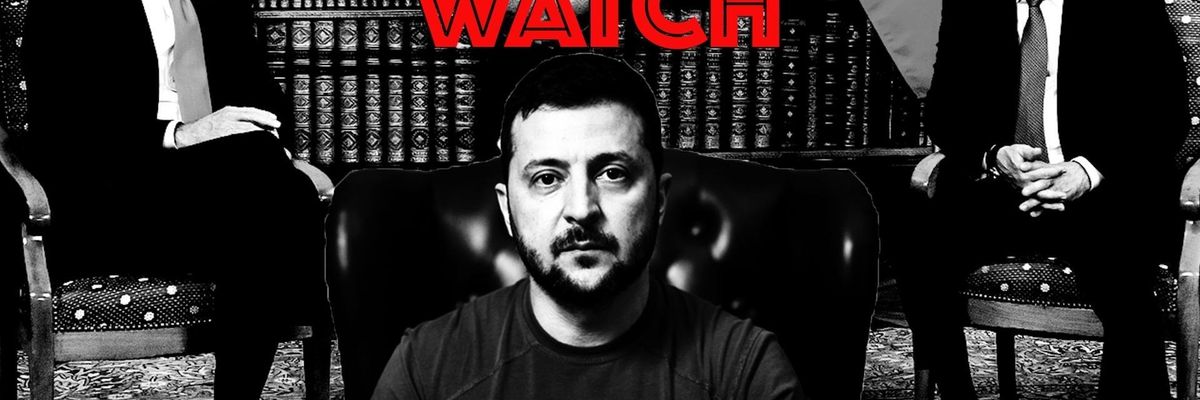The intelligence leaks that have rocked Washington for the last week included documents that revealed the Biden administration’s internal stance on the future of the war in Ukraine, and disclosed what could be more serious disagreement between the the United States and Ukraine than their public stances would indicate.
One leaked document, reported by The Washington Post on Monday, said that given challenges confronting the Ukrainian military, its planned counteroffensive could come up “well short” of its original goals. The most likely outcome, according to the top secret document, is that Kyiv makes only “modest territorial gains.”
Another document, from the Defense Intelligence Agency assesses that the war “is expected to bleed into 2024 with neither side securing victory yet both refusing to negotiate an end to the conflict,” even if Ukraine manages to win back “significant” territory in upcoming months, according to another Post report.
Ukrainian officials were reportedly upset with the assessment, insisting that it continued a pattern of underestimating Kyiv’s military. “The same people who said Kyiv would fall in three days are now leaking harmful and equally ridiculous information ahead of an offensive critically important for the entire free world,” said a person in regular contact with senior officials in Kyiv, according to Politico’s NatSec Daily newsletter. That person went on to say that the leak gives officials “grounds for suspicion” concerning Washington’s commitment to the Ukrainian cause.
Politico reported that the leaks and subsequent response from Kyiv pushed high-level officials in the Biden administration into “damage-control mode.” Secretary of State Antony Blinken affirmed the country’s “ironclad” commitment in a call with his Ukrainian counterpart.
There is no clear end in sight to these leaks, and a steady trickle of documents could show more about how the U.S. government views Ukraine’s position. There have been some private rumblings in recent months over divergence between Washington and Kyiv over realistic aims — including over Crimea — but the Biden administration has remained publicly steadfast in its rhetoric that the U.S. will support Ukraine for “as long as it takes.”
In other diplomatic news related to the war in Ukraine:
—Charles Kupchan and Richard Haass of the Council on Foreign Relations laid out a plan to get from the battlefield to the negotiating table in Foreign Affairs, suggesting a two-pronged approach that would include first increasing Ukraine’s military capabilities, before pushing both sides to the table later this year. “The West should start by immediately expediting the flow of weapons to Ukraine and increasing their quantity and quality,” they write. “By the time Ukraine’s anticipated offensive is over, Kyiv may also warm up to the idea of a negotiated settlement, having given its best shot on the battlefield and facing growing constraints on both its own manpower and help from abroad.”
—Brazilian president Lula da Silva arrived in China on Wednesday, a trip aimed in part at bolstering support for his push for a group of countries, including Brazil and China, to lead mediation efforts between Russia and Ukraine. Lula’s top foreign policy aide traveled to Moscow earlier in April and said after his trip that the door to negotiations is not “totally closed” and that a shift toward diplomacy could come “sooner than expected.”
—Pope Francis urged world leaders to use diplomacy instead of arms to settle differences in his weekly audience on Wednesday. While he refrained from referring to any current conflict, the Pope said that the current moment was reminiscent of the Cold War.
—Russian troops continued attacking eastern Ukraine, keeping up their efforts to take control of Bakhmut. According to Reuters, a top Ukrainian commander accused Moscow of using "scorched earth" tactics.
U.S. State Department news:
In a Monday press briefing, spokesperson Vedent Patel spoke about what the intel leaks meant for the trajectory of the war in Ukraine.
“Look, I will let our Ukrainian partners speak to the decisions that they’re making as it relates to the battlefield and their – any posture or planning that they are undertaking, “ Patel said. “What I would say broadly, and you’ve – this is nothing new – is that we’re going to continue to support Ukraine in the wake of Russia’s brutal aggression for as long as it takes, and that continues to be the case. But I’m not going to get into anything beyond that.”



 Top photo credit: Ngô Đình Diệm after being shot and killed in the 1963 coup (US National Archives)
Top photo credit: Ngô Đình Diệm after being shot and killed in the 1963 coup (US National Archives) 












